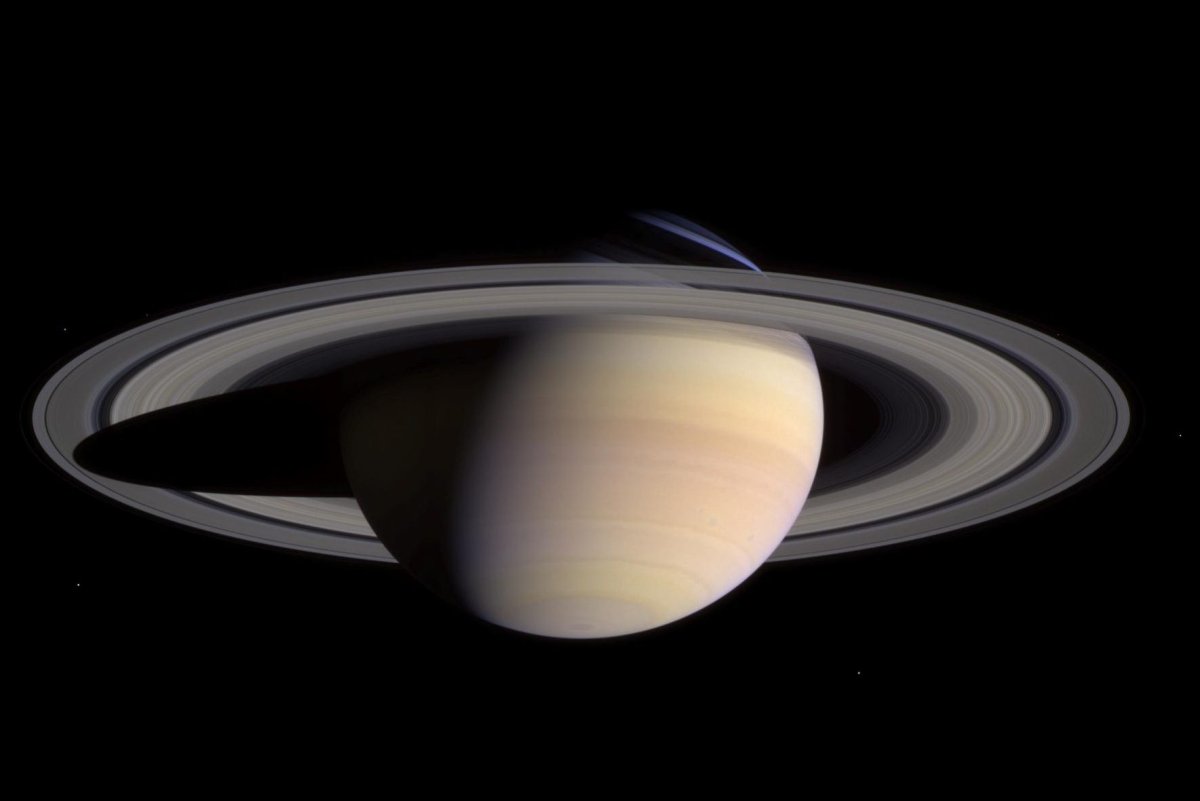Saturn’s core resembles the slushy dregs of an iced cappuccino and its signature rings are constantly wobbling due to its sloshing heart, according to a new study based on data from NASA’s Cassini spacecraft.

The study published in the journal Nature Astronomy offers new insights into the makeup of gas giant planets such as Saturn. It also sheds new light on the mysterious inner workings of such planets, which remain a mystery even to NASA.
Researchers examined subtle spiral motions in the gas giant’s rocky rings and traced them back to gravitational pulses sent out from its core, which appears to be a massive “soup” of ice, rock and liquid metals.
“We used Saturn’s rings like a giant seismograph to measure oscillations inside the planet,” said Jim Fuller, an assistant professor in theoretical astrophysics at Caltech. “This is the first time we’ve been able to seismically probe the structure of a gas giant planet, and the results were pretty surprising.”
Researchers basically watched Saturn’s inner ring for wobbles that could not be fully explained by the gravitational pull of its many moons and inferred that the added gravity was coming from the centre of the planet itself.
Fuller and the study’s lead author, Christopher Mankovich, based their analysis on data collected by Cassini, the NASA spacecraft that spent 13 years orbiting Saturn before crashing into it in 2017. They got the idea to watch the rings from a handful of studies published over the last 40 years.

Get daily National news
Their findings suggest that the core of Saturn is “fuzzy,” with several stable but undefined layers of ice, rock, hydrogen and helium.
The core is “like a sludge,” Mankovich said in a statement released by Caltech. “The hydrogen and helium gas in the planet gradually mix with more and more ice and rock as you move toward the planet’s centre.”
The researchers say more study is needed to determine how the jumbled elements of Saturn’s core affect its powerful magnetic field.
Saturn’s reportedly slushy middle would be very different from the centre of the Earth. Our planet’s core is composed of a solid, super-hot ball of iron and nickel suspended in a liquid sphere of the same materials.
Saturn’s sludgy core also appears to be much larger than once thought, and may take up about 60 per cent of the planet’s diameter. That’s large enough to fit roughly 55 Earths inside of it, though the rock and ice material is thought to be the same mass as 17 Earths.
Saturn is one of four gas giant planets in the solar system, and the second-largest after Jupiter. The other gas giants, Neptune and Uranus, are also significantly larger than Earth and the smaller rocky planets that orbit the sun.
The new findings could help scientists better understand how gas giants are formed and, ultimately, how our solar system came together.
“It’s just more complex than we thought was going to be the case,” Sabine Stanley, a planetary sciences professor at Johns Hopkins University, told National Geographic.
“It’s really hard to learn anything about the deepest parts of a planet, especially the giant planets,” Stanley said. “Any information we can get improves what we knew before.”
Scientist Matt Hedman, who participated in Cassini but who was not part of this latest study, said it provides “strong evidence” about the nature of Saturn’s core.
“I am excited to think about what all the other ring features generated by Saturn might be able to tell us about that planet,” he said in a statement.








Comments